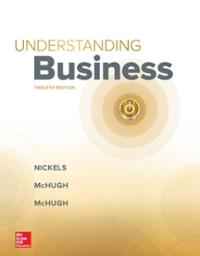Question
Exercise 2. Insurance with Firms. We now assume that, instead of the bank, there is a firm which has access to exactly the same two
Exercise 2. Insurance with Firms. We now assume that, instead of the bank, there is a firm which has access to exactly the same two technologies as the bank. In particular, at time 0, the firm collects money from individuals and it can either (i) invest it in a short-term project, which yields a return of 1 in the following period; or (ii) it can invest it in a long-term project, which yields a return R in period two. In addition, the long-term project can be liquidated as in exercise 1. The only difference is that, instead of a deposit contract, individuals who invest in the firm at time 0 receive a share for each dollar invested. A "share" is the right to receive a dividend D1 at t = 1 and a dividend D2 at t = 2, independently of whether the owner of the share is patient or impatient. Finally, we assume that, at t = 1, after receiving D1 and finding out whether they are impatient or patient, individuals can sell or buy the shares of the firm in a market.
To summarize, the sequence of events is as follows:
(i) At t = 0, agents give their one unit of currency to the firm. The firm chooses the amount I invested in the long-term project, with the remaining amount 1 I invested in the short-term project.
(ii) At t = 1, the firm pays the dividend D1. After D1 has been paid, consumers find out whether they are hit by a liquidity shock or not. At that point, they can sell or buy the shares of the firm.
(iii) At t = 2, the firm pays the dividend D2.
1. Compute the dividends D1 and D2 as a function of the firm's investment I. (Hint:
Argue that the firm will never liquidate the long-term project.)
2.Assume that, at time 1, the patient consumers buy all the shares from impatient con- sumers and pay with their dividends. Find the equilibrium price Ps of the shares. (Hint: The total expenditure by patient consumers must equal the value of the shares sold by impatient consumers.)
3.Is it possible to have a bank-run (i.e. the firm is liquidated although it is solvent) in this case? Motivate your answer.
Step by Step Solution
There are 3 Steps involved in it
Step: 1

Get Instant Access to Expert-Tailored Solutions
See step-by-step solutions with expert insights and AI powered tools for academic success
Step: 2

Step: 3

Ace Your Homework with AI
Get the answers you need in no time with our AI-driven, step-by-step assistance
Get Started


